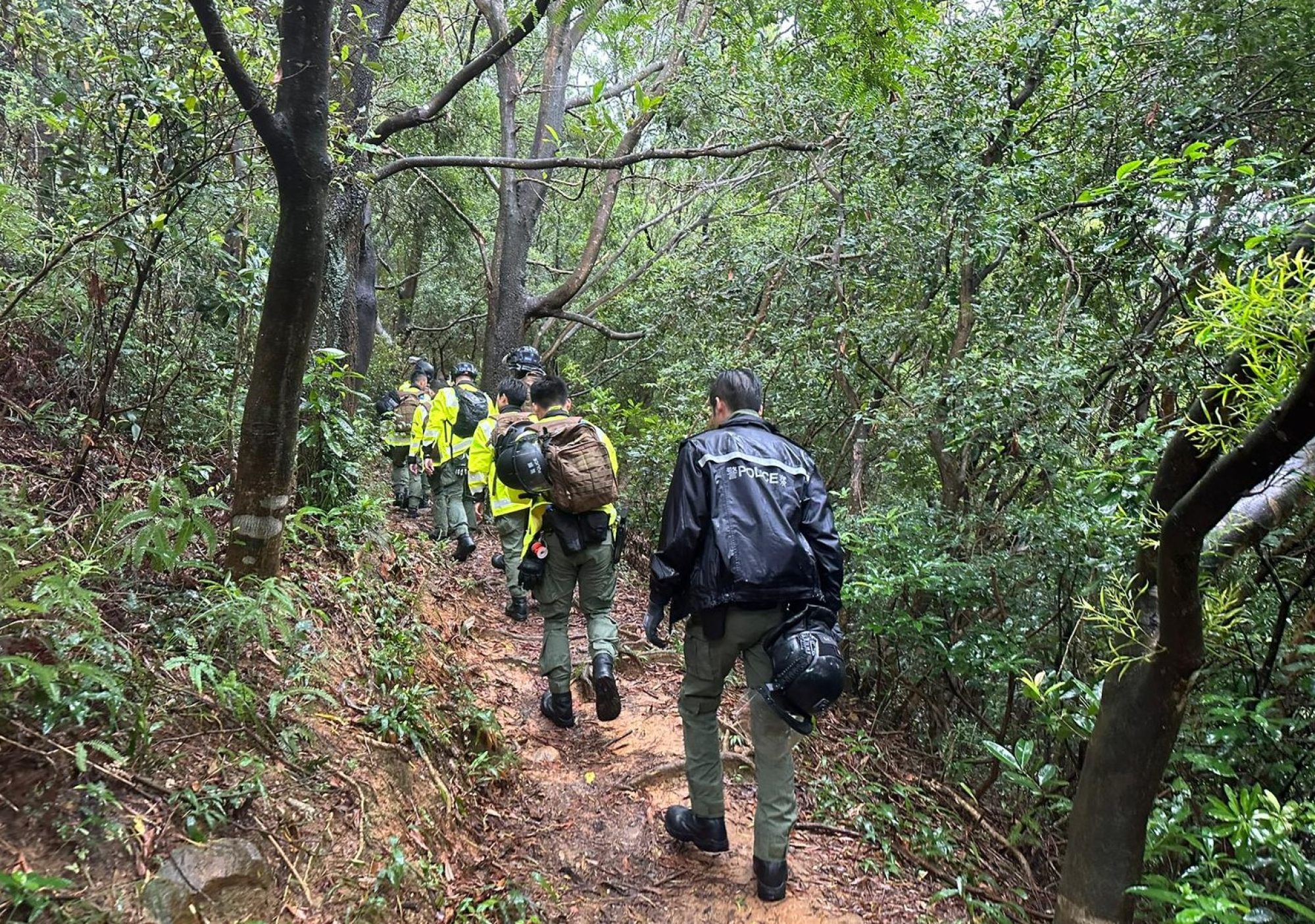
Drones and AI tools, over 300 people, 4 miles and 7 days: how Hong Kong rescuers combined grit and tech to find missing teen in area spanning nearly 1,900 football fields
- Firefighters, paramedics, Civil Aid Service members scoured Ma On Shan Country Park in race against time to find Matthew Tsang
- ‘Using a drone, we took more than 10,000 photos and used AI photo analysis tools to search for features not shown on the map,’ says Cheung Tin-yu, senior station officer at Fire Services Dept
Rescuers deployed drones and artificial intelligence (AI) tools in their seven-day search for a missing 17-year-old teenager who was found alive and well in Hong Kong on Wednesday afternoon, with volunteers calling it an “extremely lucky” outcome.
Emergency personnel revealed in a media briefing that they deployed extensive manpower and technology as they combed the hills of Ma On Shan Country Park in a race against time to find Matthew Tsang Hin-chit.
Firefighters, paramedics, Civil Aid Service members scoured an area spanning more than 10 sq km (4 miles), equivalent to nearly 1,900 football fields, over the past week.
Their progress was at one point hindered by Typhoon Koinu, which triggered the No 8 and 9 storm warnings, and a black rainstorm over the weekend.

Firefighters found the boy in undergrowth about 100 metres (328 feet) from a hiking trail in Lo Shue Tin in the country park on Wednesday. Police said they would investigate the circumstances of how he went missing after his condition stabilised.
Tsang was found conscious, but not wearing a shirt, trousers or shoes, before he was airlifted to Pamela Youde Nethersole Eastern Hospital in Chai Wan for checks.
He told authorities that the approaching Typhoon Koinu had triggered rainstorms, causing his clothes to become wet and cold, so he had taken them off.
It was not immediately known if he had spent the entire seven days in the vegetation.
The Fire Services Department said more than 120 firefighters, 28 fire engines, nine ambulances, 50 Civil Aid Service members, 24 paramedics and a search-and-rescue dog were deployed in the search. Thirteen police units involving about 100 officers joined the effort.
Hong Kong teen missing for week ‘ate leaves and drank stream water’ to survive
Chow Cheuk-fung, the assistant divisional officer at the Fire Services Department, said the operation involved various strategies.
Firefighters had collected the boy’s clothing from his home, enabling their search-and-rescue dog to track his scent, and deployed technology to aid their mission.
Cheung Tin-yu, a senior station officer at the department, said drones were used to narrow down the scope of the search.
“Using a drone, we took more than 10,000 photos and used AI photo analysis tools to search for features not shown on the map, such as temporary shelters, water sources and areas with thicker foliage,” she said.
Cheung explained that the operation was challenging as Tsang did not have his mobile phone on him, which prevented the team from using signals from his device to narrow down the search area.
Tsang, a Form six student at Diocesan Boys’ School, was last seen departing Shek Mun MTR station and heading towards Ma On Shan Country Park along Hang Shin Link in Siu Lik Yuen at around 2.30pm last Wednesday, before his eventual discovery.
Body of missing solo hiker found in Hong Kong country park after massive search
His mother earlier said the teen was the former captain of the school’s dragon boat team, and they trained in Shek Mun.
She said the boy had complained of insomnia and acid reflux last week and had taken medicine the night before his disappearance.
Cheung said the extreme weather had made the search more difficult, as rescuers had to navigate a dangerous terrain full of thick vegetation and streams.
“But we continued with the use of technology and intelligence to analyse drone footage and strategise potential hiking routes Tsang might have taken,” he said.

The team resumed the search immediately on Monday after all typhoon alerts were lifted.
A voluntary search team involving alumni, parents of Tsang’s schoolmates and other residents had put up posters near the location where he was last seen.
Anson Cheng, the founder of a separate volunteer group, The Hong Kong Guardians, said the team had carried out daily search missions since the boy’s disappearance, but it did not directly participate in the rescue of Tsang.
He said it was “extremely lucky” that the boy was found after seven days.
“It is not an optimistic situation usually after five days of disappearance,” he noted.
Are Japanese authorities doing enough to locate missing foreign travellers?
The team consisted of about 20 people, and five-to-six people would volunteer to search for Tsang at night until either 4am to 6am the next morning.
The search operation was difficult as they had limited information about Tsang, he admitted.
“He only took his wallet and Octopus card with him. He was wearing his school uniform and a pair of leather shoes. Under such circumstances, unless he has learned about wilderness survival, it is quite difficult for him to survive,” he said.
“He is an athlete, which may have helped to a certain extent.”


